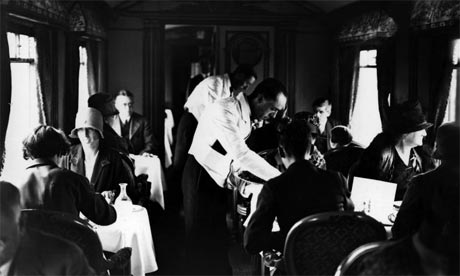I love trains. Before British trains became airliner cabins on wheels, I enjoyed many a happy journey dozing over my book in a steam-heated compartment or watching the English countryside roll by while tucking into a nice meal and glass of beer in the dining car. Granted, I am talking about what was then British Rail, so there's a lot of nostalgia at work here, but every now and then the stars did align–usually somewhere in Devon.
That being said, I haven't much sympathy with passenger railways; except those owned by private companies in a properly competitive environment (i.e. they put up they money, they take the risk, reap the profits, and someone else can take business from them) rather than white elephants owned by the state or subsidised by the taxpayers. To me, rail is yesterday's technology perfectly suited for freight. Passenger trains are great fun, but except for a few very built up areas they rarely pay their way these days and daft plans for building so-called "high speed" lines in Britain and America are nothing but frivolous and insanely expensive luxuries. They attract ridiculously small numbers of passengers compared to motor cars, as the above graph from Futurepundit shows. Worse, as events in Japan are proving, a centralised system like rail is next to useless in a major disaster while cars have at least a shot at getting through.
So why do some people of a certain political persuasion lust after 1850s technology? I firmly believe that it hasn't a jot to do with economics or the "environment" or energy or whatever. In fact, when you run the numbers, passenger services harm all three and more. It's much simpler. The decision of when or where or how often a car travels is between the driver and his pocketbook. That's called freedom and it drives a certain type of would-be petty dictators crazy.


No comments:
Post a Comment